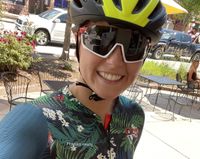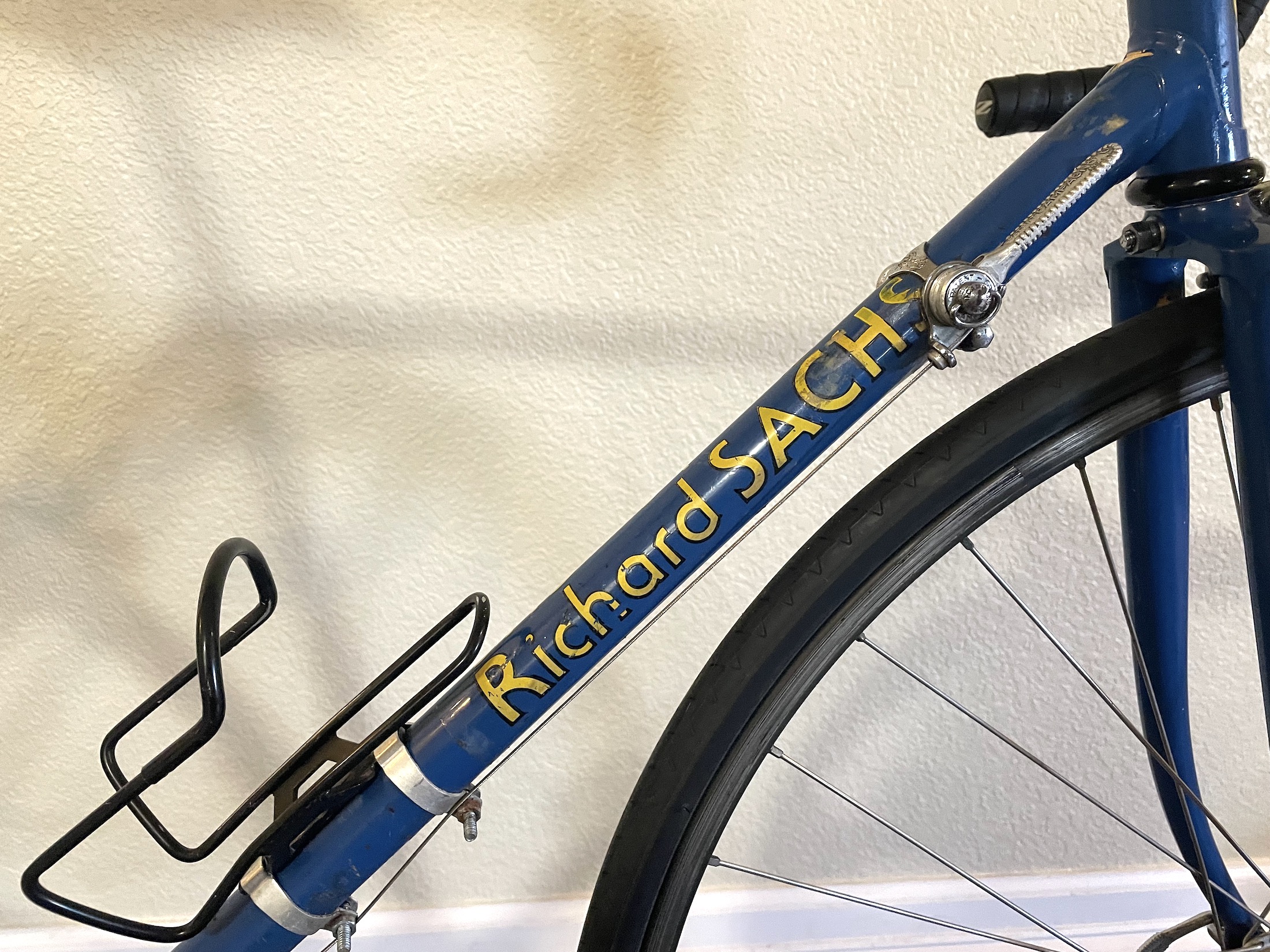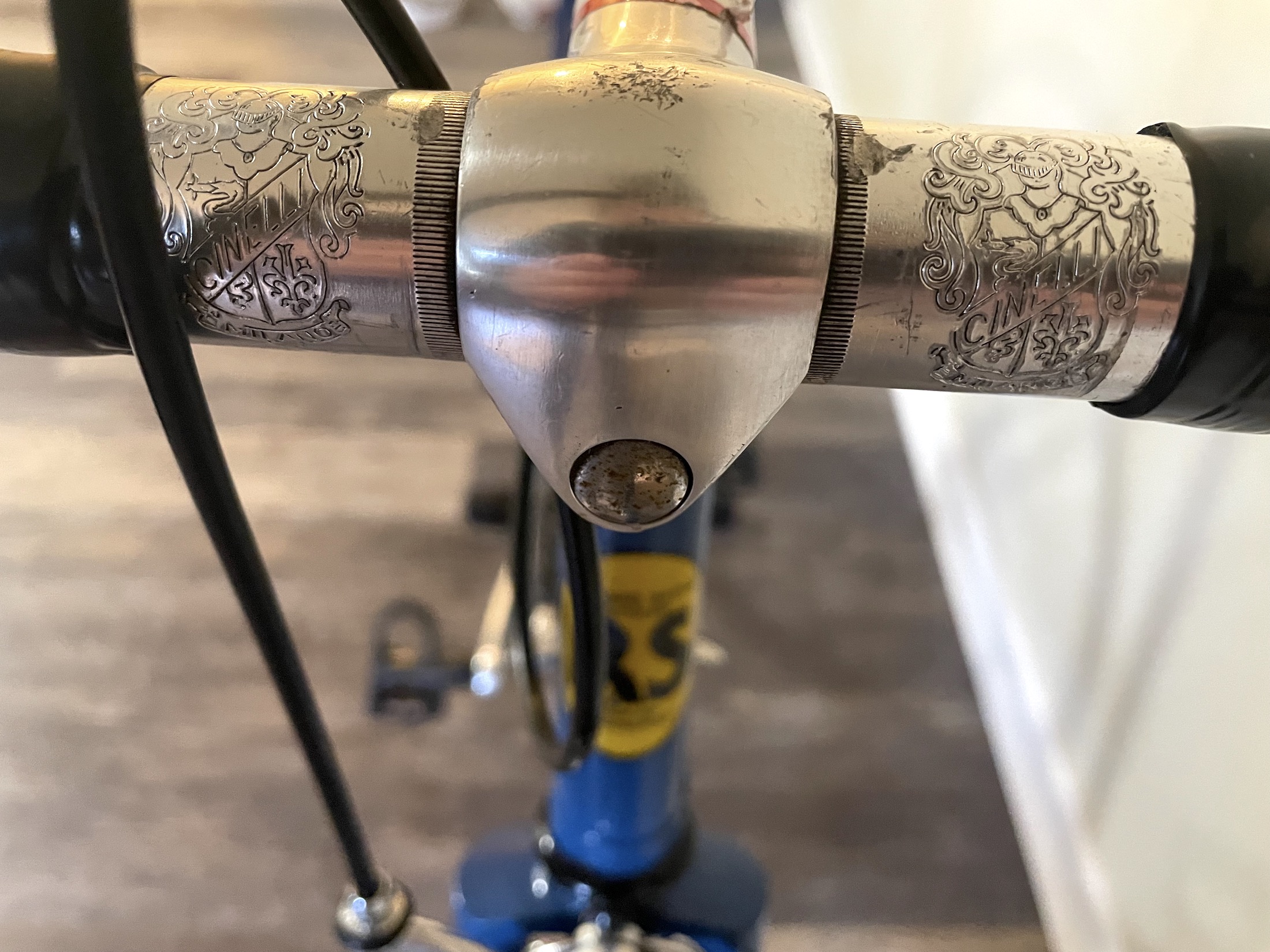Of bike and body: The tale of how one Richard Sachs frame touched three lives
A celebrated framebuilder, a 1980s racer and her daughter connected by one 40-something-year-old bike frame


It was a sizzlingly hot day in Truckee, California. The early June sun made the road ahead stretch into goopy black taffy. Margi Porter (née Bethke) licked her lips, took one final inhale, then exhaled and assumed a tucked position atop the ramp she would blaze down.
Three, two, one. Ride!
It was the 1981 California State Time Trial Championships, a 40-kilometer race against the clock in which Porter would later claim a top-10 finish.
Her weapon of choice that day was a handcrafted Richard Sachs steed whose azure steel and sunflower yellow lettering glistened under the sun and sweat of the effort it took to cross the finish line.
“There was nothing but me and my Sachs [during that race],” said Porter. “We were a single machine; I powered it, it powered me. It was complete synergy: what we call ‘flow.’”
Richard Sachs is among the best custom framebuilders in the world. His frames, which have changed little over the years, are known for their distinctive lugs and curved front fork, hand-welded seams and, of course, the “Richard SACHS” emblazoned across the downtube.
Sachs’ entrance into the framebuilding world was a self-proclaimed “comedy of errors.” Yet nearly five decades later, he still crafts each of his frames alone and completely by hand. And some 50 custom bikes make it into the hands of riders eagerly awaiting their classic “RS” bike each year.
The latest race content, interviews, features, reviews and expert buying guides, direct to your inbox!
The fine steel and lugs, a heritage from his starting days in 1970s England. Taking some time to explore between high school and college, a young Sachs found himself abroad working at Witcomb cycles, churning out bikes to be used as vehicles rather than high-end racing vessels.
“I was never tutored or mentored in making bikes. I simply came in every day and did what I was asked to do,” Sachs said. “But, you know, if you stand around watching people do a craft for eight hours a day, six days a week, you learn a thing or two.”

Slideshow: The RS steed






Back in the States, Sachs assisted in opening up a bike shop where he and a business partner, Peter Weigle (of J.P. Weigle bikes), tried to recreate the frames they’d made abroad.
“We looked at each other like, ‘I don’t know how to make bikes’,” said Sachs “Peter and I labored for months, trying to remember the processes we’d seen in England. We eventually created our own method that was unique to us and quite different from what we’d learned abroad.”
After a few years working in tandem with a shop, Sachs and Weigle branched off to form their own respective framebuilding businesses. Sachs, of course, still has the lights on today while Weigle has since retired (but has been known to take on a frame-related project here and there).
Before the age of the “superbike” and mass-produced bike models, these were deliberately designed frames painstakingly built by craftspeople, lug by lug, bolt by bolt. The bikes were designed to be ridden at the highest level by riders who were keenly aware of how to position themselves when taking sharp corners or long descents, when to push the gearing to its limit and when to back off.
“Having a great bike frame is part of feeling confident in competition; most of the riders I raced against had custom frames, and I got a lot of ‘street cred’ for showing up with a Richard Sachs,” remembered Porter. “I was proud to ride a Sachs frame and I, in turn, did my bike proud with my performances. I got to a point where I truly understood how to ride it in a way that got the most out of both me and the bike.”
Porter didn’t always ride a Richard Sachs, though. Her love of cycling began long before Sachs after dreamt of crafting one. She was in fourth grade and a change in school districts meant she could either take the bus or ride her bike to school. The choice was obvious.
“To this day, I have sensory memories of gliding no-handed down suburban streets and zooming around corners,” said Porter. “I loved the feeling of beating the bus home at the end of the day.”
It was her first inkling that riding a bike was about more than pushing the pedals - it was about the freedom, physically and mentally, a bike represented.
In high school, Porter would take daylong rides around New Jersey hometown. In an age before spandex, chamois cream, GPS or Google Maps, Porter would pack water, some money, and paper maps and simply see where the day would take her.
Porter even served as her own mechanic, frequently taking apart her entire bike and solving the puzzle of putting it back together with tools found in her childhood garage.

At age 18, Porter biked from New Jersey to Wyoming —a nearly 2,300-mile journey— simply because she could. On store-bought aluminum bike frames, Porter and three friends journeyed from the east to the mountain west in a few weeks. By the time Porter reached Wyoming, she was out of money and worked as a hotel housekeeper for a month to pay for a flight to her final destination: her first semester at Stanford University.
Overcoming fear, the unknown, and battling the unexpected on her journey west, Porter credited that cross-country ride as one of her most formative.
“My bike became so much more than a mechanical means of transportation,” said Porter. “It was an unexpected gateway to experiencing people, places, and myself in a meaningful way. I would never have had the same experiences if I drove a car or took an airplane.”
All that, from a Schwinn 10-speed.
Once at Stanford, Porter served as the first female co-captain of the Stanford Club Cycling Team, and that’s when her trust RS steed entered her life.
“When I had been at Stanford for about six months and was riding with the cycling club on my Schwinn 10-speed, I saw an index card on a bulletin board advertising a slightly-used Richard Sachs frame for $600,” said Porter. “My friend told me it was a good price so I bought it. By total luck, it fit like it had been made just for me. I rode that bike throughout college and then at regional and national championships.”
As a point of comparison, a single Richard Sachs frame today starts at about $6,000, while a complete bike by Richard Sachs is in the ballpark of $10,000. Six-hundred dollars was quite the steal, even for the early 1980s.
For Porter, her times on her blue and yellow Richard Sachs bike represented the period of her life in which she and her bike did a lot of “figuring it out.”
She muscled through her first-ever criterium, century, and day -rides on the RS steed. She became a Northern California State Champion on the Richard Sachs frame. What’s more, this steed, her two-wheeled confidante, even gave her a place to process the social and academic challenges of college.
Her time aboard the RS bike was as much about racing and performance as it was about “sharing an incredible physical experience while learning the skills of mastering your machine in order to master yourself.”

In this era of disc brakes, electronic shifting, and aerodynamic everything, Sachs still keeps things simple. No apps, no computer renderings. Just him, his workbench, and hope to master his skill.
“The master I serve is the fabrication of the bike,” said Sachs. “My goal, every time I begin to work on a bike, is to hope to reach a quality and level of build that I’ve never reached before. If I ever reached a point where I didn’t think I could build the next frame better than the one before it, there really wouldn’t be any point in my continuing to come to my workshop each morning.”
In a sense, framebuilding and the riding of that frame aren’t so different.
Great bikes take us to great places that can be found on a map, that’s the initial allure. But a trusty two-wheeled partner will also take us places no cartographer can plot. They take us to independence, self-reliance, and through the journey of wanting the most out of ourselves each time we clip in.
Porter wondered if today’s riders still have the same “soulful connection” to their bikes. Meaning, the notion that one’s favorite bike helps them not just win races, but grow personally, spiritually, each time they roll out for a session.
Porter kept her Sachs until her daughter, I, was old enough to ride. I was 15 years old and honored to receive it. Our connection was instant as I felt the decades of adventure ingrained in the steel frame; I completed my first road races and triathlons on that Richard Sachs frame — 30 years after my mom rode it.
The bike currently hangs, now retired from its time on the asphalt, in my home near Boulder, Colorado. Porter meanwhile, still hits the open road, but prefers long mountain bike rides in the woods of Maine, where she resides. She still uses rides to figure things out and cherishes the mental clarity a day in the saddle can provide.

Kristin Jenny and the 1980s RS today

Kristin Jenny is an elite triathlete based near Boulder, Colorado. Although most of her time is spent in aerobars somewhere in the mountains, she finds time to enjoy eating decadent desserts, hiking with her husband and dog, and a good true crime podcast.